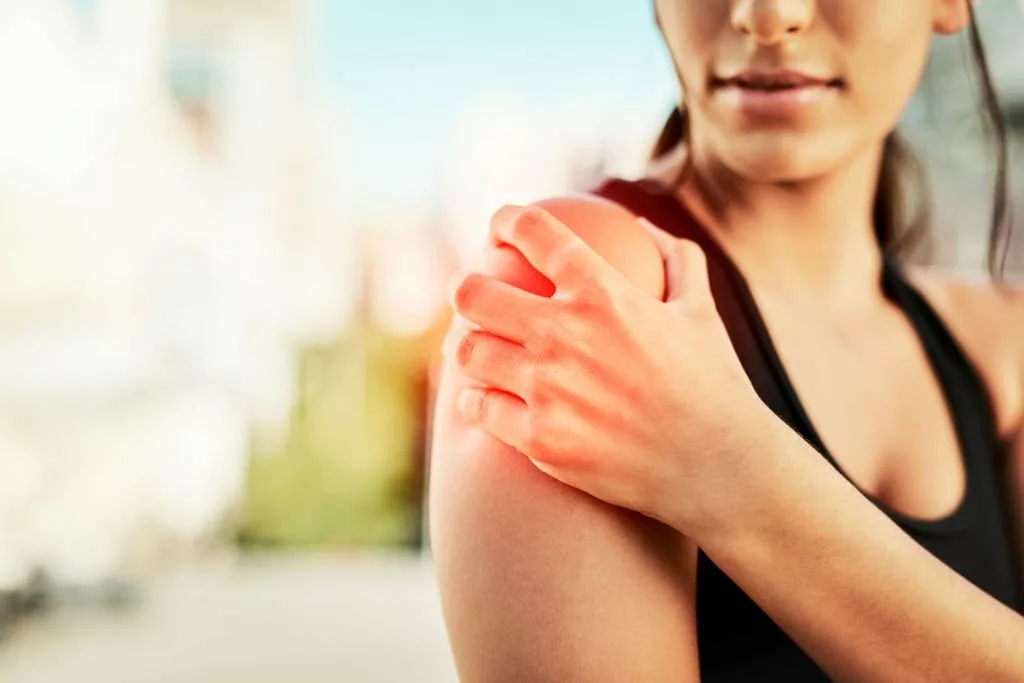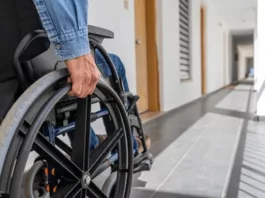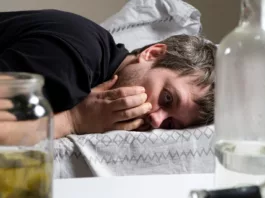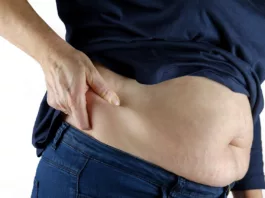Parsonage-Turner syndrome or Brachial Neuritis is a rare medical disorder that involves damage and abnormality in the functioning of the nervous supply of upper body parts, most commonly the upper arms and shoulder. This syndrome comes under the category of neurological problems and produces disturbance in the functioning of motor nerves. Motor nerves are responsible for the movement and functioning of the body part. If it gets disturbed, the corresponding body part fails to perform the function normally.1Feinberg, J. H., & Radecki, J. (2010). Parsonage-turner syndrome. HSS journal: The Musculoskeletal Journal of Hospital for Special Surgery, 6(2), 199–205. https://doi.org/10.1007/s11420-010-9176-x
What is Parsonage-Turner Syndrome?
Parsonage-Turner syndrome, also termed idiopathic brachial plexopathy, is an uncommon neurological disorder involving damage to the brachial plexus of the nervous system and affects the functioning of the upper extremities. This condition presents as a sudden, intense pain in the upper arm and shoulder, severely hindering a patient’s ability to use their arms, hands, and shoulders for physical activities. Prolonged impairment of these body parts can result in muscle atrophy, significantly affecting the individual’s physical capabilities and quality of life. Fortunately, in many cases, this period of functional disability is temporary, and the affected muscles gradually regain their normal mass and function.
This episodic period of pain, muscle loss, and healing continues in the body until patients get pharmacological intervention for subsiding pain and proper treatment to remove the causative agent of this syndrome.2Gstoettner, C., Mayer, J. A., Rassam, S., Hruby, L. A., Salminger, S., Sturma, A., Aman, M., Harhaus, L., Platzgummer, H., & Aszmann, O. C. (2020). Neuralgic amyotrophy: a paradigm shift in diagnosis and treatment. Journal of neurology, neurosurgery, and psychiatry, 91(8), 879–888. https://doi.org/10.1136/jnnp-2020-323164
First reported in 1948 by Parsonage and Turner, the condition was initially named Neuralgic amyotrophy or Brachial neuritis due to its primary impact on the brachial plexus—a network of nerves having motor and sensory wings, responsible for upper body sensation and movement, including arms, shoulders, and hands. Damage to the brachial plexus in Parsonage-Turner syndrome causes severe pain and twitching sensations in the hands and shoulders. The duration of abnormal sensations varies among different patients.
Incidence
The occurrence of this disorder is exceptionally rare, with only 3-4 individuals out of every 100,000 experiencing it from birth. Parsonage-Turner syndrome does not exhibit a specific age predilection, as it can manifest at any stage of life. However, statistics indicate a slightly higher susceptibility among males compared to females for this neurological condition.3Milner, C. S., Kannan, K., Iyer, V. G., & Thirkannad, S. M. (2016). Parsonage-Turner Syndrome: Clinical and Epidemiological Features From a Hand Surgeon’s Perspective. Hand (New York, N.Y.), 11(2), 227–231. https://doi.org/10.1177/1558944715627246
Phases of Parsonage-Turner Syndrome
Phase 1 (Acute Pain Phase):
This initial phase is characterized by sudden and severe pain, typically affecting one shoulder, though it can sometimes involve both shoulders. The pain is often sharp and burning and may extend to the arm and neck. This phase can last from a few days to several weeks. The duration of this phase often correlates with the overall recovery time, with longer pain phases generally indicating a longer recovery period.
Phase 2 (Weakness and Atrophy Phase):
Following the resolution of acute pain, individuals enter a phase marked by muscle weakness, particularly in the shoulder and arm. This can lead to noticeable muscle wasting (atrophy) in the affected areas, such as the shoulder girdle, upper arm, or scapular muscles. This phase typically lasts between six to 18 months, but in some cases, it may persist for longer. Functional impairment during this phase can significantly affect daily activities and arm movements.
Phase 3 (Recovery Phase):
In this phase, muscle strength and functionality begin to return, although recovery can be gradual. Some individuals regain full muscle strength, while others experience residual weakness or discomfort. The extent and duration of recovery can vary widely among individuals, with some recovering fully and others having lasting deficits.
Causes of Parsonage-Turner Syndrome
The exact cause of Parsonage-Turner syndrome remains elusive, largely due to the variable symptoms experienced by different patients. However, multiple studies suggest that an aberrant immune response, where the immune system mistakenly targets the body, is a primary factor behind the nerve damage in this disorder. Additionally, initial research has indicated that the intrusion of harmful microbes into the body can directly harm the nerve supply of the upper extremity.
Moreover, when microbes enter the body, the immune system is activated, prompting immune cells to attack foreign substances.4Bauer, T. W., & Resnick, L. (2022). Parsonage-Turner Syndrome: Antecedents May Not Be Causes. JBJS case connector, 12(1), e21.00720. https://doi.org/10.2106/JBJS.CC.21.00720 In this destruction, the normal nervous cells of the brachial plexus also get damaged, and the patient experiences painful sensations in the upper arm or shoulders. The exact mechanism is still unknown. However, certain risk factors enhance the chances of this disease’s occurrence in the body. These factors are:
Viral infection
This includes infections caused by HIV, Coxsackie B virus, paramyxovirus, and smallpox virus.5Mastroianni, A., & Mauro, M. V. (2022). Parsonage-Turner syndrome and cytomegalovirus disease. Clinical neuropathology, 41(3), 135–144. https://doi.org/10.5414/NP301409
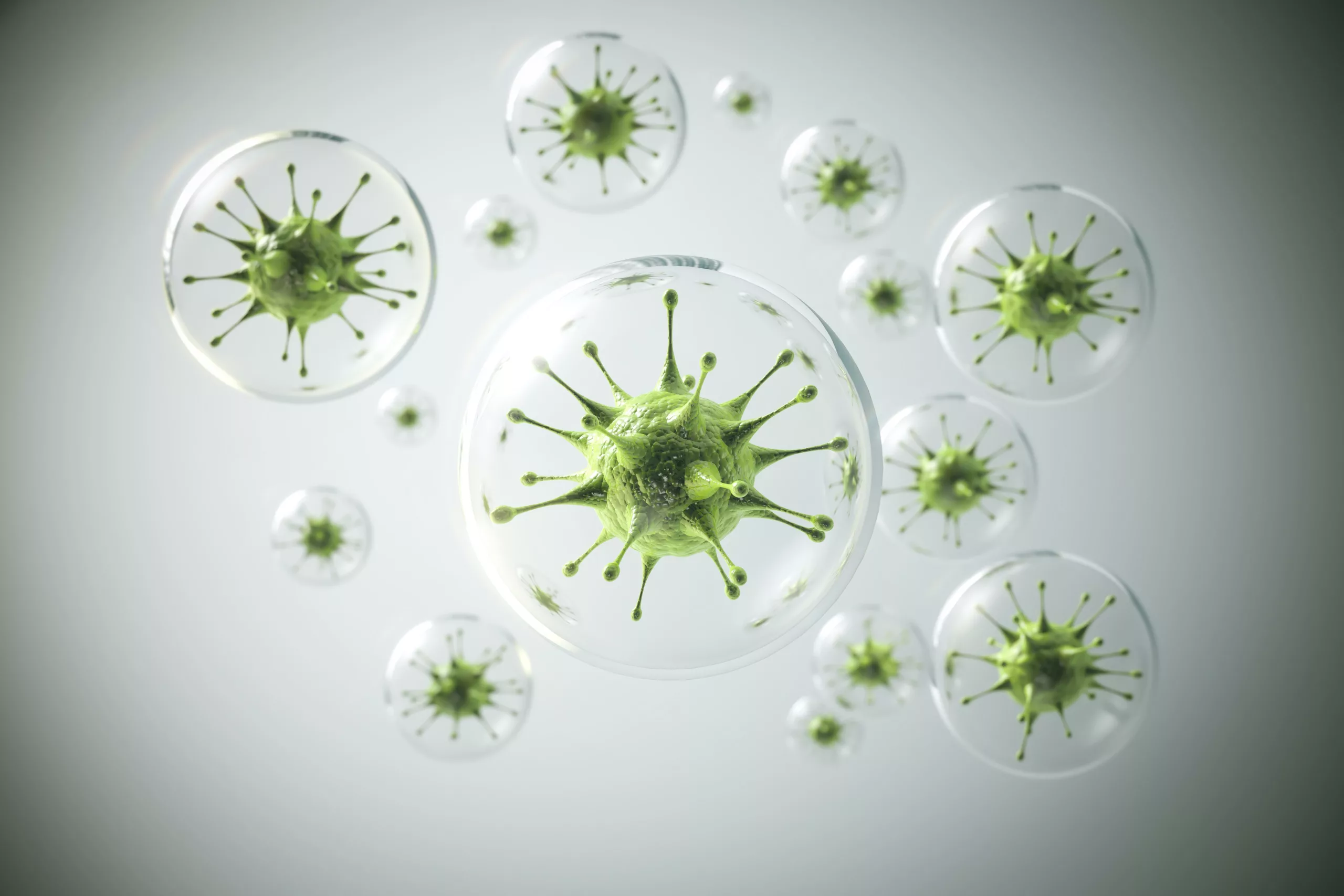
Surgical procedure
Any surgical procedure enhances the risk of microbial entry into the body. In surgical settings, there is a potential for the introduction of bacteria or viruses, which may subsequently activate the immune system and contribute to the development of Parsonage-Turner syndrome.
Autoimmune disorders
Individuals with autoimmune disorders are at an increased risk of developing Parsonage-Turner syndrome. Autoimmune disorders involve the immune system mistakenly targeting and damaging the body’s own tissues and cells. This aberrant immune response can potentially extend to the nervous cells of the brachial plexus, leading to the syndrome’s painful symptoms.
Injury or overuse
Muscle and tendon injury in the upper extremities can also cause disorder. Physical trauma to these areas may contribute to nerve damage and the subsequent development of the condition. Similarly, strenuous exercises involving the shoulders can also trigger the condition.
Connective tissue disorders
Conditions such as Ehlers-Danlos Syndrome, which affects connective tissues, may heighten the likelihood of developing Parsonage-Turner Syndrome. These connective tissue disorders can exert systemic effects on the body, potentially influencing the brachial plexus and elevating the risk of susceptibility to this syndrome.
Immunization process
The immunization process against various viruses, while crucial for preventing infectious diseases, has been associated with an enhanced risk of developing Parsonage-Turner syndrome.6Fibuch EE, Mertz J, Geller B. Postoperative onset of idiopathic brachial neuritis. Anesthesiology. 1996;84:455–458. doi: 10.1097/00000542-199602000-00028. The mechanism behind this association is still unclear.
Clinical Manifestation of Parsonage-Turner Syndrome
The signs and symptoms of Parsonage-Turner syndrome are as follows:
- Pain: The region of pain occurrence is the upper body, including the upper arm, shoulder, hands, and forearm. The onset of pain is usually sudden and severe. Mostly, pain affects the dominant hand of your body, but sometimes, the patient’s arms and shoulders are affected by severe pain.
- Muscle loss: After severe pain and restricted mobility due to painful sensation, muscle loss occurs in the subsequent region.
- Abnormal neural reflexes: Parsonage-Turner syndrome may lead to abnormal neural reflexes in the upper arms and shoulders. These reflexes may exhibit unusual responses or heightened sensitivity in the affected areas.
- Disturbance of functional mobility: The functional mobility of the affected body parts, including the arms, shoulders, and hands, can be significantly disrupted. Pain and muscle weakness often restrict movements, making it challenging for individuals to perform routine tasks that require the use of these upper extremities.
- Altered sensation: Abnormal or no sensation in the affected part.
It’s important to note that the clinical manifestations of Parsonage-Turner syndrome can vary from one individual to another, and the severity of symptoms may differ as well. Additionally, the duration of these symptoms can vary, with some patients experiencing relatively brief episodes while others may endure prolonged discomfort and functional impairment.
Diagnosis of Parsonage-Turner syndrome
Identifying PTS can be challenging, as it can be mistaken for other neurological conditions like Guillain-Barre syndrome, cervical spondylosis, cervical radiculopathy, or mononeuritis monoplex. To avoid misdiagnosis and ensure accuracy, a comprehensive diagnostic approach is essential. This includes gathering a complete medical history, conducting extended neurological examinations to assess muscle strength, loss, and neural reflexes, and employing diagnostic tools like electromyography (EMG) to confirm unilateral brachial plexus involvement. Electromyography shows unilateral involvement of the brachial plexus and differentiates this syndrome from other neurological problems. Additionally, the doctor may use imaging studies to rule out cervical spine pathology associated with nerve root-level compression. In cases where such compression is evident, cervical epidural injections can help differentiate between cervical radiculopathy and PTS-related symptoms.
Treatment Intervention for Parsonage-Turner Syndrome
As this disorder is caused by the abnormal immune response of the body, there is no specific line of treatment for this syndrome. The main aim of treatment lies in overcoming the symptoms of the patients and avoiding discomfort. As the symptoms appear in the body as an episodic wave of pain and normal sensation, patients should seek medical advice as early as possible to avoid a poor prognosis and the occurrence of potential complications.7Smith, C. C., & Bevelaqua, A. C. (2014). Challenging pain syndromes: Parsonage-Turner syndrome. Physical medicine and rehabilitation clinics of North America, 25(2), 265–277. https://doi.org/10.1016/j.pmr.2014.01.001
The pharmacological intervention includes prescribing:
- Analgesic to reduce pain. During the initial phases of this condition (within the first few weeks), the primary approach to treatment revolves around managing pain with medications such as opiates, NSAIDs, and neuroleptics.
- Steroids to treat muscle loss and gain muscle strength. Administering oral prednisone within the first month of onset may potentially reduce the duration of symptoms. However, to confirm the effectiveness of treatment involving corticosteroids or other immune-modulating therapies, further studies are required.8 van Alfen N, van Engelen BGM, Hughes RAC. Treatment for idiopathic and hereditary neuralgic amyotrophy (brachial neuritis). Cochrane Database of Systematic Reviews 2009, Issue 3. Art. No.: CD006976.
- Topical Local analgesic creams to give relief to the painful area
- In cases where a classic shingles rash is present or when there is suspicion of postherpetic neuralgia, it is advisable to contemplate the use of antiviral medications.
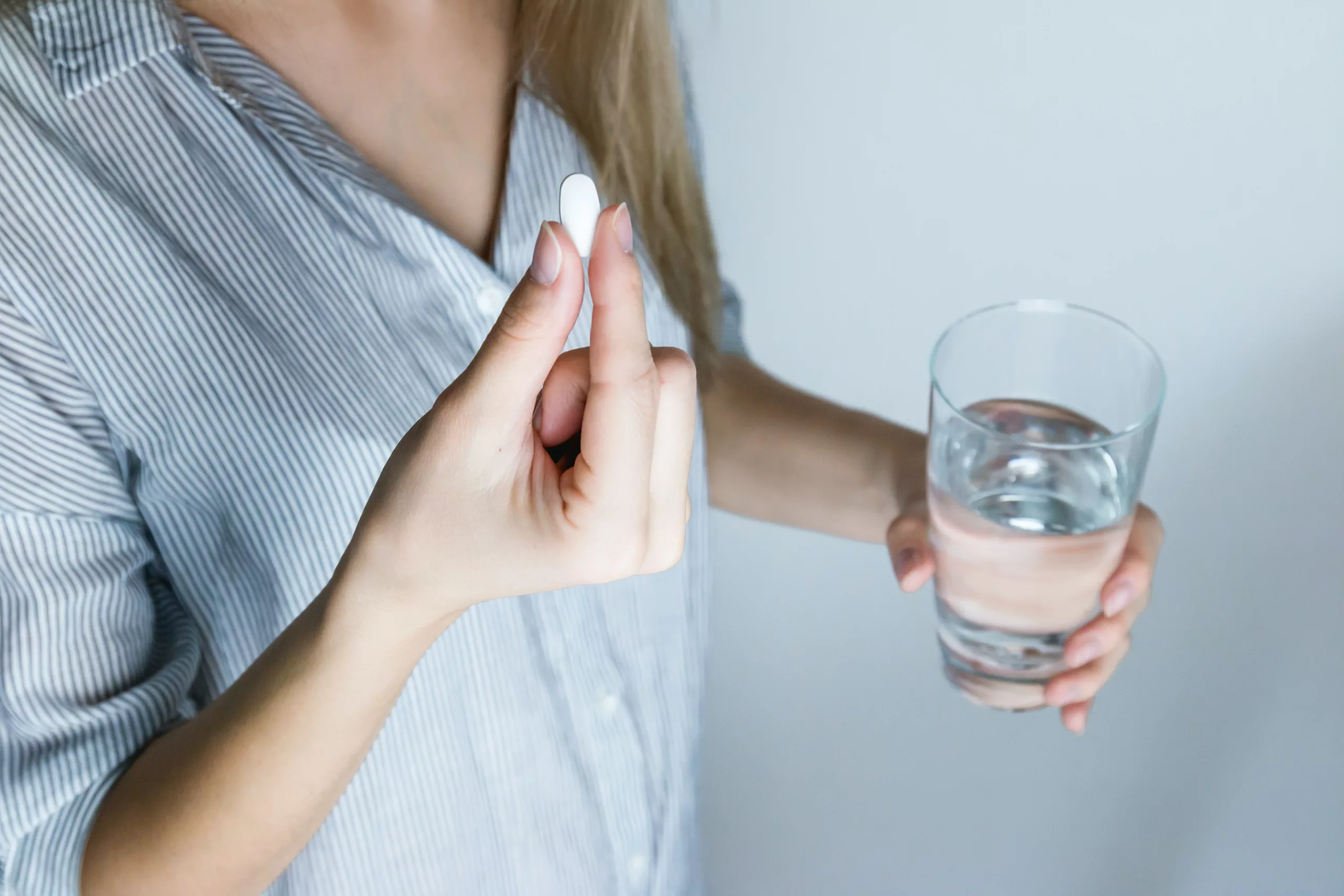
Advanced Treatment Options for Parsonage-Turner Syndrome
It includes:
- TENS: Transcutaneous electrical nerve stimulation is the method in which nerve cells get excited via stimulus in the form of electric current. In this syndrome, the brachial plexus is stimulated to perform normal function.
- Acupuncture: It involves the insertion of fine needles into specific points on the body to stimulate nerve pathways and promote healing. While acupuncture has not been definitively proven to cure PTS, some individuals find relief from their symptoms through this therapy.
- Immunotherapy: The doctor may use this option to suppress the faulty response of the immune system against the brachial plexus.9 Staff NP, Engelstad J, Dyck PJ, et al. Immune-mediated postsurgical neuropathy. M-62 American Neurological Association 134th Annual Meeting Poster Session Abstracts Oct 2009.
In severe cases, if other treatments have not alleviated your symptoms, your healthcare provider may recommend surgery. Surgical techniques may include nerve grafting or tendon transfers.
Exercises for Parsonage-Turner syndrome
Following the resolution of clinical symptoms, it is strongly recommended that patients seek guidance from a qualified physiotherapist. Regular shoulder and arm exercises will help to recover muscle loss. After the acute phase, patients should take mobility exercises to avoid muscle weakening. The most common exercises include stretching exercises to enhance the blood supply of the region, strengthening exercises to regain lost muscle strength, and functional exercises to enhance the function of affected muscles. 10Tjoumakaris, F. P., Anakwenze, O. A., Kancherla, V., & Pulos, N. (2012). Neuralgic amyotrophy (Parsonage-Turner syndrome). The Journal of the American Academy of Orthopaedic Surgeons, 20(7), 443–449. https://doi.org/10.5435/JAAOS-20-07-443 Patients are advised to consult an expert trainer and carry on extensive exercise cycles to rehabilitate the muscles of the upper arms and shoulder.
The Recovery Period for Parsonage-Turner Syndrome
The ideal recovery time for parsonage Turner syndrome ranges from two months to two years. The recovery time varies in different patients. However, if the second episode of pain occurs, the patient will experience the same muscle loss. Complete recovery of the symptoms might take years. Patients have to undergo intensive exercise therapy to gain muscle strength. To prevent the onset of symptoms, patients should steer clear of risk factors that increase their susceptibility to developing this syndrome. Some patients with mild cases recover without taking extensive physical therapy because their bodies will help them regain muscle strength.
Prognosis of Parsonage-Turner Syndrome
There is no treatment for a complete cure for this syndrome. However, most patients completely recover from this neurological disorder after a single episode of pain. While some patients experience recovery throughout their life. There are some conditions in which the prognosis becomes poor, and recovery doesn’t occur completely. These conditions are:
- No muscle gain by extensive exercise period over three months
- If the immune response affects the nerve supply of the lower extremities.
- Female sex
To sum it up, This rare neurological disorder affects the physical strength of the upper body. The symptoms require pharmacological therapy and extensive physical therapy. The recovery period differs for each patient.
Refrences
- 1Feinberg, J. H., & Radecki, J. (2010). Parsonage-turner syndrome. HSS journal: The Musculoskeletal Journal of Hospital for Special Surgery, 6(2), 199–205. https://doi.org/10.1007/s11420-010-9176-x
- 2Gstoettner, C., Mayer, J. A., Rassam, S., Hruby, L. A., Salminger, S., Sturma, A., Aman, M., Harhaus, L., Platzgummer, H., & Aszmann, O. C. (2020). Neuralgic amyotrophy: a paradigm shift in diagnosis and treatment. Journal of neurology, neurosurgery, and psychiatry, 91(8), 879–888. https://doi.org/10.1136/jnnp-2020-323164
- 3Milner, C. S., Kannan, K., Iyer, V. G., & Thirkannad, S. M. (2016). Parsonage-Turner Syndrome: Clinical and Epidemiological Features From a Hand Surgeon’s Perspective. Hand (New York, N.Y.), 11(2), 227–231. https://doi.org/10.1177/1558944715627246
- 4Bauer, T. W., & Resnick, L. (2022). Parsonage-Turner Syndrome: Antecedents May Not Be Causes. JBJS case connector, 12(1), e21.00720. https://doi.org/10.2106/JBJS.CC.21.00720
- 5Mastroianni, A., & Mauro, M. V. (2022). Parsonage-Turner syndrome and cytomegalovirus disease. Clinical neuropathology, 41(3), 135–144. https://doi.org/10.5414/NP301409
- 6Fibuch EE, Mertz J, Geller B. Postoperative onset of idiopathic brachial neuritis. Anesthesiology. 1996;84:455–458. doi: 10.1097/00000542-199602000-00028.
- 7Smith, C. C., & Bevelaqua, A. C. (2014). Challenging pain syndromes: Parsonage-Turner syndrome. Physical medicine and rehabilitation clinics of North America, 25(2), 265–277. https://doi.org/10.1016/j.pmr.2014.01.001
- 8van Alfen N, van Engelen BGM, Hughes RAC. Treatment for idiopathic and hereditary neuralgic amyotrophy (brachial neuritis). Cochrane Database of Systematic Reviews 2009, Issue 3. Art. No.: CD006976.
- 9Staff NP, Engelstad J, Dyck PJ, et al. Immune-mediated postsurgical neuropathy. M-62 American Neurological Association 134th Annual Meeting Poster Session Abstracts Oct 2009.
- 10Tjoumakaris, F. P., Anakwenze, O. A., Kancherla, V., & Pulos, N. (2012). Neuralgic amyotrophy (Parsonage-Turner syndrome). The Journal of the American Academy of Orthopaedic Surgeons, 20(7), 443–449. https://doi.org/10.5435/JAAOS-20-07-443

